| Published in Destinations |
From Vietnam to Malaysia and Thailand via Singapore
CRISTINA ŞTEFAN, June-July 2005
Sapa is this tiny town in North Vietnam surrounded by verdant peaks constantly in mist, and rice fields spreading across the valley in all sorts of green shades. I booked a three day trek and it ended up being just me and the tour guide, which was ok, most of the time.
We hiked about 15 km each day, mainly through rice fields and corn, stopping at various hill tribe villages. Not many tourists at all and the only people I have met in those three days were the locals and the H'mong that were trying to sell you all sorts of things you will never need.
At night we stayed in the house of hill tribe people, just the mattress and mosquito net, though I had the luxury of having a bath every night: a bucket of ice cold water in a two by two meter room. We visited about four different tribes in the three days and it's incredible that though they live so close to each other they all have their different language and customs.
The houses are built entirely differently and you can tell what tribe they are by where they live in relation to the valley. The houses share one thing in common though, all made of wood and it is just one big room parted in different sections: kitchen, bedroom and eating area.
In Sapa is where I had the best food too as the family we were staying with was cooking for us and they pulled out the rice wine they say they keep for special occasions. They can definitely keep their alcohol and they take offense if you don't drink as much as they do.
***
After Sapa I took a flight to Singapore and stayed at the airport because I arrived too late and there was no more public transportation. The airport was a treat though: free internet and movies, a bar opened all night and lots of people passing the night there....so it felt more like a night out than wasting time in an airport! I spent enough time in Singapore to get a Starbucks and book a ticket to Kuala Lumpur.
I might regret not spending more time there but at the time it just felt like it would be just another bunch of buildings. Kuala Lumpur was a nice change for a couple days. Truly a modern city with anything you could imagine, including the biggest malls I have ever set foot in. I spent the time there just walking around all day and dodging the rain...interesting mix of colonial and Islamic architecture and people there were much nicer than other places I have been too.
I spent about two hours, while waiting for the rain to stop, talking to a lady, who owned the cafe I was sitting in, about her family, Malaysia, where she traveled and why she would like to live in the States...America is still the land of milk and honey for many people I have met.
***
I flew to Borneo and went to Kinabalu park where for the two hour ride I was packed into an eight-seat minivan with ten others. Mount Kinabalu is about 4100m, highest in SE Asia. I was mentally prepared for a hard hike, altitude sickness and freezing cold. I got to the park, paid a hefty climbing fee and had another expensive dinner.
I met a few people at the hostel that were climbing the next day, including a couple from Belgium that let me share their guide, and wanted no money...sweet. They take real good care of their mountain and on top of the fee for climbing (about thirty bucks) you have to pay for a guide, book accommodation half way through the mountain and they keep track of you at all times...what time you start climbing, what time you get to the rest stop, what time you start next day, etc.
First day it's a 6km hike with a difference in altitude of about 1800m. Long, sweaty and steep are the words that come to mind. The hike is mainly through the rainforest but lookout points lack for the most part as you are surrounded by mist and lush vegetation.
After the 2500 steps, some as high as 30 cm, which makes the hike that much harder I think, and passing seven shelters, we reached Laban Rata...There, a vertical black stone wall reminds you that the hardest part is still ahead. Below, we were lucky to see the valley and what is left of the rainforest through the breaks in the clouds.
At laban Rata, it was like being on a cruise, or what I imagine being on a cruise is like. There is nothing to do, but eat, drink expensive tea and wait for seven pm to roll around so you can go to bed. Time passed pretty fast though, chatting away with the people I met along the hike.
Next day, the alarms went off at 1:30 am and everybody started climbing by 2:30 am. There was a long line of flashlights and people dragging their feet up the steps, stopping every two or three steps to catch their breath...I managed to make my way past them and then it was just me, the dark, a mountain I could not see where it ended and the sky lighted up by stars.
After another 700m of hiking there was no vegetation left, just bare limestone and the white rope you have to follow to the top. It was much easier doing this hike at night because I just went along, eyes on the shadows above, trying to guess how much further I had to go and occasionally looking back at the lights in the valley and the flashlights climbing along at a constant pace.
I reached the last stretch after another hour and I think I cursed a little under my breath as the last part is just a pile of stones and it is difficult making your way through without resorting to crawling.
The people at the top must have seen my light because they called out, saying I was almost there. I made it up there and our bones froze for the next 30 minutes while awaiting for the sunrise.
As more and more people made their way to the top, the sun was coming up, but it was too cloudy to really see it. The purple, orange colors in the east, breaking the dark, were enough though. We eventually made our way back down because we couldn't stand the cold anymore and after another 4 hour hike to the bottom we took the bus to the hot springs… such a nice treat for our body!
***
Back in Kuala Lumpur I took a bus to Taman Negara, the oldest jungle in the world as they advertise it. Long trip there and I had to change about four buses. I only stayed for two days. By this point I was getting a little tired of moving around every two, three days and I was dreaming of Thailand, beaches and sipping some fancy drink, not exerting any more effort than I had too. I flew to Koh Samui but only stayed for one night as it was too crowded, more big buildings and too many stores.
In Koh Tao it was a different story though. I was supposed to stay for five days, do an open water diving course and then go to the north of Thailand for more trekking. I ended up staying for two weeks, doing two courses and was close to finishing all require courses to start the dive master course.
The only reason I left was that I was becoming too much of a regular and I was afraid I would never get off that island. I talked to people who have been to Koh Tao before and they were telling me how they went for two weeks and stayed for two months, or even “worse,” they are still there, living for a year or two. I couldn't understand how that could be, until I got there and it was all clear.
Sairee beach is the only big stretch of sand in Koh Tao, where you have most of the dive shops, bars etc. It's full of Europeans, very few Americans (I met maybe 4 the whole time I was there). I don't know how to describe it to make it justice...just like in the movies and commercials that make you wanna pack up and take a trip. Palm trees lining the beach, clear "turquoise" water, the long tail boats waiting for passengers and people cruising along the beach at a molasses-like pace...no one is in a hurry, no one has anything better to do than dive, chill and drink.
Anyway, I did my first open water course, which included four dives at 18m, which introduced me to aquatic life, and I wanted more. I was in a group of seventeen people from all over the world and thirteen of them stayed around for the advanced course, five more dives to 30m including a night dive. Saw lots of different fish and I didn't think I would get so excited about seeing a stingray or a school of batfish swimming by me.
After the courses were finished I ended up staying around for five more days snorkeling, doing a couple more dives when I finally saw some reef sharks, rented a motorbike which I managed not to crash and visited most of the other beaches in Koh Tao. It was so relaxing waking up at seven in the morning with no alarm clock, making my way to the restaurant for the regular muesli breakfast and watching how people were rolling in excited about some dive site or another.
I felt as much as home as you can feel when traveling, everybody knows everybody or at least they want to know everybody, smiles and good times all around.
Spending the evenings on the terrace, the background noise of the high tide waves, just chilling, listening to one or another's story about how they ended up in Koh Tao, how much they love it...made me not want to think about getting back to the States, to the traffic, stress and new job. Bah, but the reality in Koh Tao, is not my reality unfortunately...so, back home for me it is.
Vietnam, Malaysia and Thailand in Pictures

Rice fields in Vietnam.
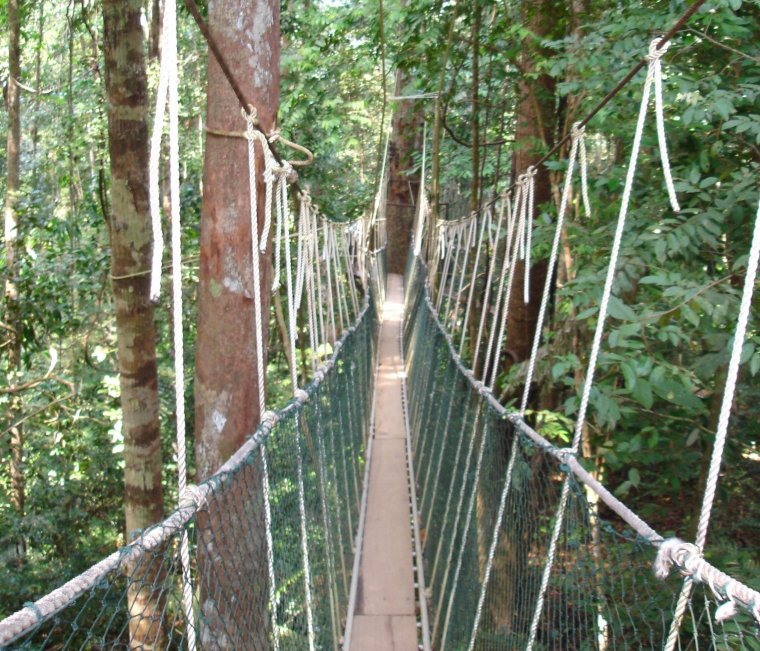
Suspension bridge, Kuala Tahan, Taman Negara National Park, Malaysia

Railay Beach, Thailand.

Railay Village, Thailand.

Koh Tao, Thailand.
YOU MAY ALSO LIKE
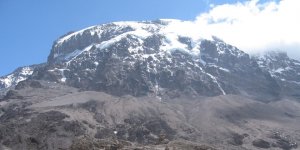
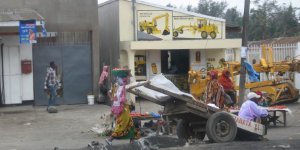
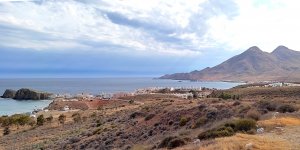

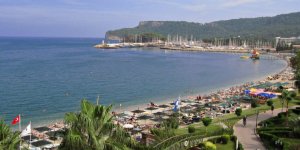
 If you own or manage a travel-related business such as a hotel, a bed-and-breakfast, a restaurant, a pub or a cafeteria, you can create a web page for your business for free on Titi Tudorancea Travel Info. » |
